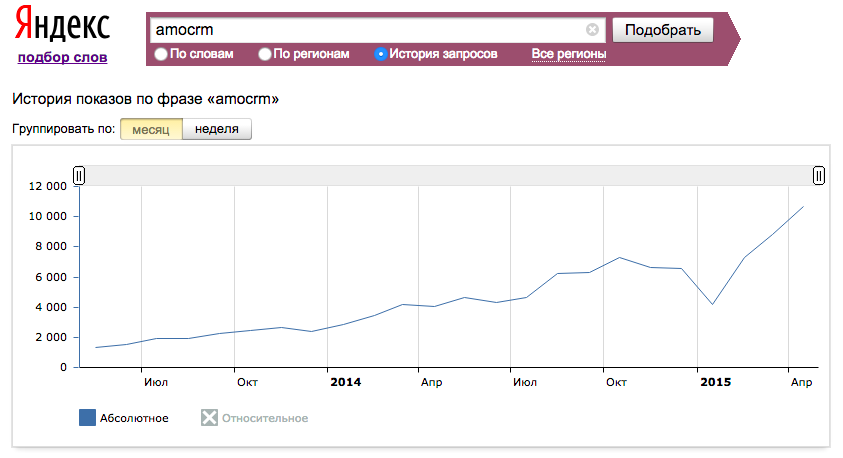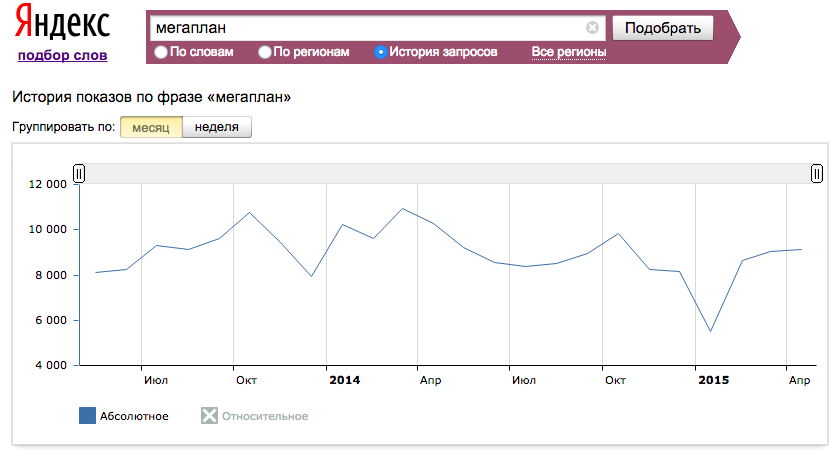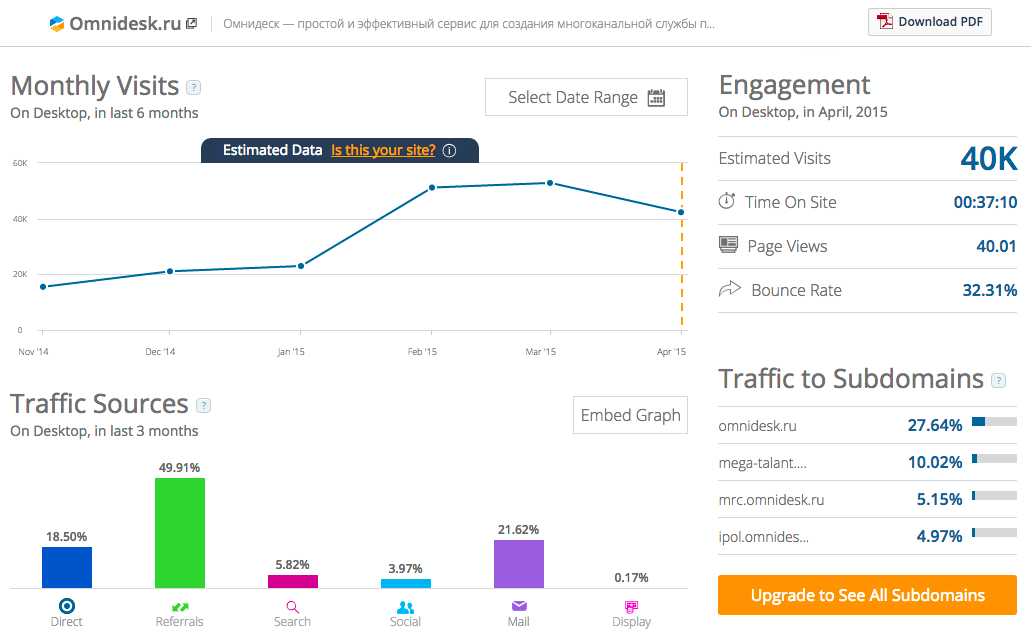Secrets of competitor analysis: how to find out more than you want to tell? Personal experience and examples
Are you interested to know how much your competitors earn, where do they get their customers from and how are they doing? I think that any business owner will not be indifferent to this information. Depending on the type of business, there are different ways to analyze. Today I will tell you how we analyze our competitors in Teamdesk for free - an online customer support service.

Today there are a lot of opportunities that help you understand how your competitors are doing. There are many services and open information. Such an analysis gives a lot of insights and useful information. Let's start with the simplest:
When we only thought about Teamdesk, some of our competitors were actively blogging about their work. So, not without pleasure, I read the post from the guys from Omnideska on Habré, where they talked about the launch of the service, testing of marketing channels and first successes. From this content we learned that:
Take at least our blog , in it you will find everything: starting with the number of users and costs (in the upper right corner), ending with the financial model and conversions. I am sure most competitors read us. We read news, blogs and social networks of competitors. But not to copy and repeat. It is important for us to understand the current situation, the general trend and find insights.
')
It is very useful to subscribe not only to the accounts of the companies themselves, but also to the pages of their CEO. The fact is that I often see in my tape how my colleagues write something like “They have grown 2 times in the last half of the year” or “We are growing by 10% in revenue each month”. Not everything can be believed, but often the numbers are true. Go ahead.
To analyze the success and failure of competitors Wordstat is great. Data for the analysis of known ticket systems is not enough, so as an example, we look at CRMs. We go in Wordstat , we drive in the name of CRM (in our case it is AmoCRM) and select "Query History". After entering the captcha, Yandex will show how the frequency of requests has changed over the past 2 years. Here is the trend for Amo and Megaplan.
AmoCRM

Megaplan

You can try typing in different variations, for example, “teamdesk” and “timdesk”. The popularity of this or that writing will depend on the habits of the people and how the company promotes itself. So amoCRM spelling "amocrm" - the most popular, but the Megaplan - "megaplan". As you can see, I write this myself.
What does query analysis with the name of a competitor give? From it you can extract the following information:
What kind of inquiring minds have developed a wonderful service www.similarweb.com that allows you to analyze a huge number of site parameters. The paid version starts at $ 199, but we are interested in the free version, which we will use. By the way, using this service, you can analyze and mobile applications.
Go to SimilarWeb, drive in the site name in the field and click Search. What do we see?

We see a bunch of useful and interesting information. Let's try to analyze it together:
Well, how? It was very interesting to me. I think, having analyzed your competitors using this tool, you will also be able to learn a lot of new things. Go ahead!
Now go to Google and drive in the name of our competitor. The idea is to look at where our colleagues in the workshop have flashed and were mentioned lately. To track this, you need to set the filter “For the week” in the search settings and optionally specify the language.

Thus, we will see not the most relevant materials mentioning a competitor (which may be 2 years old), but the newest ones. So I found 2 interesting insights:
If possible, you can still use specialized monitoring systems (for example, youscan.ru ), which will keep track of mentions in social networks, blogs or forums. So you will see more real customer reviews, understand better what customers of your competitors love / dislike.
A simple and very effective method that allows you to quickly and simply understand from your own experience what is happening with competitors - try to become their client. What I actually did =)
For example, the guys from Omnideska, I noticed the absence of the possibility of payment by bank transfer and the conclusion of a contract. This can be a problem for customers. Also, when registering, you can sometimes notice ID accounts with the sequence number of the account or user, which allows you to judge the number of customers.
At the guys from Yusdesk, I noticed a complicated registration with entering a phone number for an SMS confirmation and 3 steps - this greatly reduces conversion to registration.
Why do we analyze competitors? Not to copy and imitate. If we begin to do this, then, firstly, we will always be in the position of catching up, and secondly, we will repeat not only the successes, but also the failures of competitors. One can never say from the outside how a particular activity or method of advancement works. It is important to find insights and conclusions.
Guys, if you know other interesting methods for analyzing competitors, write in the comments.
PS We are about to launch a paid rate and tell in the next articles:
So subscribe to our blog at Megamozge, so as not to miss the new post!

Today there are a lot of opportunities that help you understand how your competitors are doing. There are many services and open information. Such an analysis gives a lot of insights and useful information. Let's start with the simplest:
1. Subscribe to the newsletter and social networks.
When we only thought about Teamdesk, some of our competitors were actively blogging about their work. So, not without pleasure, I read the post from the guys from Omnideska on Habré, where they talked about the launch of the service, testing of marketing channels and first successes. From this content we learned that:
- the context works, but there is little traffic and one registration cost $ 3,
- Habr did a great job and the guys received 1000 registrations from one post, but emails didn't work,
- guys are bootstrapping and they have no investor, etc.
Take at least our blog , in it you will find everything: starting with the number of users and costs (in the upper right corner), ending with the financial model and conversions. I am sure most competitors read us. We read news, blogs and social networks of competitors. But not to copy and repeat. It is important for us to understand the current situation, the general trend and find insights.
')
It is very useful to subscribe not only to the accounts of the companies themselves, but also to the pages of their CEO. The fact is that I often see in my tape how my colleagues write something like “They have grown 2 times in the last half of the year” or “We are growing by 10% in revenue each month”. Not everything can be believed, but often the numbers are true. Go ahead.
2. Using Wordstat from Yandex
To analyze the success and failure of competitors Wordstat is great. Data for the analysis of known ticket systems is not enough, so as an example, we look at CRMs. We go in Wordstat , we drive in the name of CRM (in our case it is AmoCRM) and select "Query History". After entering the captcha, Yandex will show how the frequency of requests has changed over the past 2 years. Here is the trend for Amo and Megaplan.
AmoCRM

Megaplan

You can try typing in different variations, for example, “teamdesk” and “timdesk”. The popularity of this or that writing will depend on the habits of the people and how the company promotes itself. So amoCRM spelling "amocrm" - the most popular, but the Megaplan - "megaplan". As you can see, I write this myself.
What does query analysis with the name of a competitor give? From it you can extract the following information:
- General trend. It is clear that Amo is actively growing, while Megaplan is stuck on the current client base. Most likely, the growth is minimal.
- You can try to compare yourself with a competitor. If your brand is looking for 10 times less than competitors, then most likely you are generally 10 times less. It is only important to either add all possible spellings and compare the result, or choose the most common ones.
- Promotional activities. If you run a large advertising campaign, you can see it as a peak (a sharp increase in the number of requests and a rapid decline to its normal state).
- Seasonality of demand is also clearly seen in this diagram.
3. Use SimilarWeb
What kind of inquiring minds have developed a wonderful service www.similarweb.com that allows you to analyze a huge number of site parameters. The paid version starts at $ 199, but we are interested in the free version, which we will use. By the way, using this service, you can analyze and mobile applications.
Go to SimilarWeb, drive in the site name in the field and click Search. What do we see?

We see a bunch of useful and interesting information. Let's try to analyze it together:
- The traffic graph shows a general trend, you can also add your website for comparison and visually see who is better.
- Due to the characteristics of the service, we see the most active account of competitors (they are placed on a subdomain). Apparently, the guys from mega-talant.com have a lot of tickets.
- Traffic sources in general provide insight into which channels are working or not working for competitors. The screenshot shows that from the social networks the guys in the mail do not have conversions, but almost half of all traffic is links to the site. More about them below.
- It is also clear that competitors work only for Russia and Ukraine.
- Section "Referring Sites" perfectly shows who links to the site and where the traffic comes from. We see that from thematic platforms besides Habr Helpdeski.ru, Startuppoint.ru, Siliconrus.com worked well (it means that we also need to be there). Again, due to the nature of the service, we see clients.
- The next remarkable block “Search Traffic” shows both search queries for which a competitor receives traffic, as well as keywords for which they buy advertising (also take note of when we are working on SEO and context).
Well, how? It was very interesting to me. I think, having analyzed your competitors using this tool, you will also be able to learn a lot of new things. Go ahead!
4. Analysis of the issuance of search engines and mentions
Now go to Google and drive in the name of our competitor. The idea is to look at where our colleagues in the workshop have flashed and were mentioned lately. To track this, you need to set the filter “For the week” in the search settings and optionally specify the language.

Thus, we will see not the most relevant materials mentioning a competitor (which may be 2 years old), but the newest ones. So I found 2 interesting insights:
- Our colleagues began to practice business breakfasts.
- There is a wonderful market.startpack.ru site with an overview of various software and services where we need to register.
If possible, you can still use specialized monitoring systems (for example, youscan.ru ), which will keep track of mentions in social networks, blogs or forums. So you will see more real customer reviews, understand better what customers of your competitors love / dislike.
5. Just call or register with competitors.
A simple and very effective method that allows you to quickly and simply understand from your own experience what is happening with competitors - try to become their client. What I actually did =)
For example, the guys from Omnideska, I noticed the absence of the possibility of payment by bank transfer and the conclusion of a contract. This can be a problem for customers. Also, when registering, you can sometimes notice ID accounts with the sequence number of the account or user, which allows you to judge the number of customers.
At the guys from Yusdesk, I noticed a complicated registration with entering a phone number for an SMS confirmation and 3 steps - this greatly reduces conversion to registration.
Results
Why do we analyze competitors? Not to copy and imitate. If we begin to do this, then, firstly, we will always be in the position of catching up, and secondly, we will repeat not only the successes, but also the failures of competitors. One can never say from the outside how a particular activity or method of advancement works. It is important to find insights and conclusions.
Guys, if you know other interesting methods for analyzing competitors, write in the comments.
PS We are about to launch a paid rate and tell in the next articles:
- How to get the first 1000 registrations for free.
- How we attract customers and how much we managed to earn.
- How we want to make the best offer on the market and what it will be.
So subscribe to our blog at Megamozge, so as not to miss the new post!
Source: https://habr.com/ru/post/291014/
All Articles